On January 3, 2019, the film Van Gogh. On the Threshold of Eternity, by Julian Schnabel, starring Willem Dafoe as van Gogh. Click here for an in-depth look at reasons why you should see the film, click here for a list of ten paintings you may encounter in the film.
There is no doubt that at the basis of the critical fortune of the great Vincent van Gogh (Zundert, 1853 - Auvers-sur-Oise, 1890), it is possible to place, among others, the contribution made by the art historian Roger Fry (London, 1866 - 1934), who can be counted among those who allowed the name of the great Dutch painter (towards whom, as is universally known, fate was certainly not benevolent as long as he was alive) to enter the history of art. One of Roger Fry’s merits lies in having fully grasped the essence of the relationship between van Gogh and nature: in the article with which, in 1922, the English scholar operated a kind of canonization of the artist (literally: “he was a madman, but he was also a saint,” Fry wrote, because “amid all the turmoil of his inner life, the one supreme and dominant impulse was a universal passion of love”), the critical position that, in fact, placed van Gogh among the greats of the 19th century is formulated in no uncertain terms. Fry, in particular, emphasizes the fact that the images painted by van Gogh flowed from an approach to the external world that was different from that which characterized most of his contemporary painters, and which moved from an entirely inner emotion: in other words, his paintings were, to use Fry’s words, “pure expressions of self,” and no other artist had succeeded better than van Gogh in “illustrating so fully his own soul.” Among the happiest moments in van Gogh’s career, Fry singled out the first phase of his stay in Arles (so much so that he called 1888 an annus mirabilis for the painter from Zundert), and he emphasized van Gogh’s approach to nature, pointing out the differences that separated him from Paul Cézanne: Referring to a painting such as The Yellow House in Arles (kept at the Van Gogh Museum in Amsterdam, it depicts the dwelling where van Gogh resided for some time on rent during his stay in the Camargue town), the art historian noted how the artist had saturated the sky to give it a blue that had little to do with that of Mediterranean skies but intended to propose a more intense, dramatic, “almost threatening” image (as opposed to Cézanne’s landscapes, which, instead, inspired contemplation and reflection). “The artist’s interest,” Fry stated, “was entirely captured by the dramatic conflict between the houses and the sky, and the rest was little more than an introduction to this theme.”
Fry’s analysis also considered other significant works by van Gogh. One of these was Wheatfield with Cypresses, a painting now housed in the National Gallery in London: the artist created it in September 1889, when he was an inpatient in the Saint-Paul de Masole psychiatric hospital (where he entered on May 8 of that year) in the village of Saint-Rémy-de-Provence. During the period of his hospitalization, van Gogh did not stop, as was his habit, to travel the countryside of Provence in search of inspiration.We do not know, however, whether the landscape now preserved in the London museum is an actual Provençal view, or a figment of the artist’s imagination, given also the symbolic value that van Gogh attributed to cypresses. “There is a wheat field,” Vincent wrote to his brother Theo on June 25, 1889, “very yellow and bright, perhaps it is the brightest canvas I have ever made. The cypresses still bother me, and I would like to do something like I did with the sunflowers, because it amazes me that no one has yet done them as I see them. The cypress is beautiful in line and proportion, it’s like an Egyptian obelisk. And the green is of such a distinct quality. It is a black splash in a sunny landscape, but among the black notes it is one of the most interesting, one of the most difficult to render that I can imagine.” It is a common critical opinion that in the National Gallery painting and other versions (two variants of the same landscape are preserved in as many private collections), the artist did not intend to reproduce the surface appearance of the landscape, but rather the way the landscape appeared to him: it is, in essence, an inner vision, and it was precisely in Arles that the artist experimented for the first time (also aided by his closeness to Paul Gauguin) with a painting that took shape directly from the imagination, and not fromdirect observation of nature (although it was research that the artist soon abandoned to return to painting by looking at real subjects). Not only that: in the flamboyant form of the cypress tree and the extremely cursive accepts of the landscape (the sky, the mountains, the wheat field, the trees), Fry identified the evidence of an agitation of the artist’s state of mind, as if that painting so fast, dense and undulating was a kind of reflection of his mental disposition at the time.
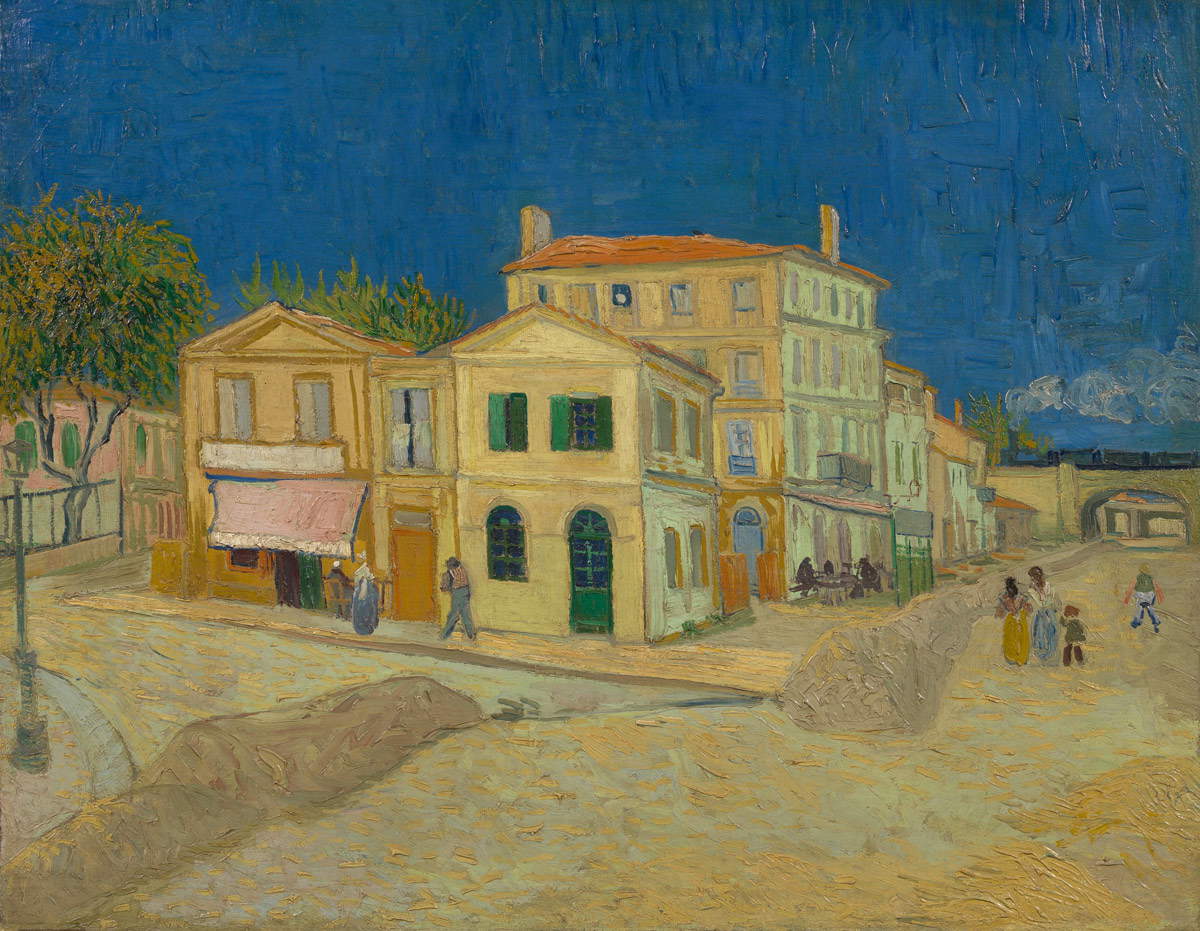 |
| Vincent van Gogh, The Yellow House (September 1888; oil on canvas, 72 x 91.5 cm; Amsterdam, Van Gogh Museum) |
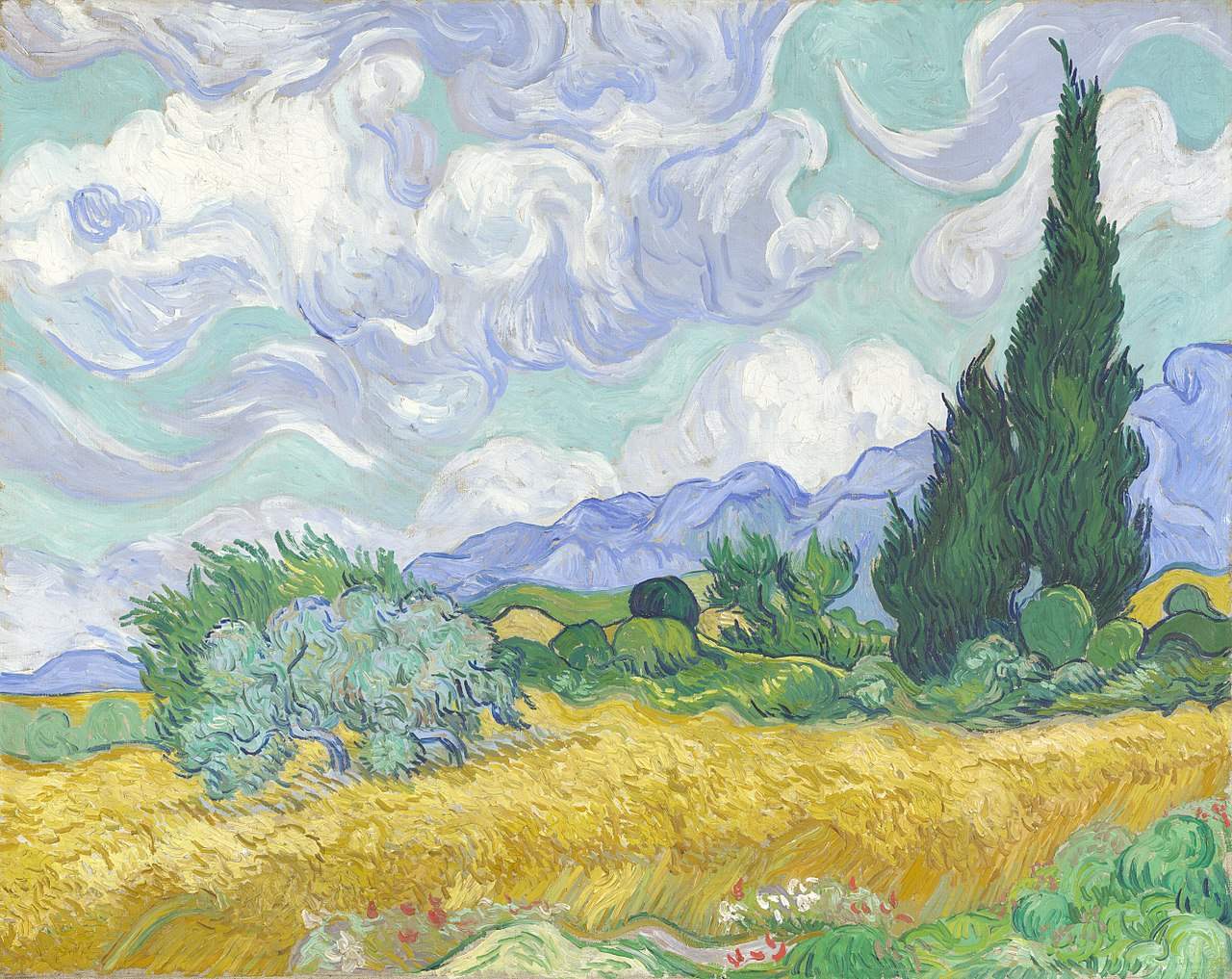 |
| Vincent van Gogh, Wheatfield with Cypresses (September 1889; oil on canvas, 72.1 x 90.9 cm; London, National Gallery) |
Nearly a hundred years have passed since the publication of Roger Fry’s article, and today, thanks to the intensification of studies on Vincent van Gogh, we certainly have many additional elements to avoid turning the English art historian’s position into a stereotyped and immobile view that would certainly not do any justice to the complexity of van Gogh’s art. An inescapable starting point is the painter’s dense epistolary (excerpts from his letters were published as early as the 1890s, while the publication of the letters to Theo dates back to 1914, and the first important English edition dates back to 1927): admittedly, the references to nature are innumerable and it is impossible to give them punctual feedback in the space of this article, but it is nevertheless possible to identify a few salient passages to offer a non-exhaustive but nevertheless more complete overview of the way van Gogh imagined nature. A key passage is contained in the letter Vincent sent to Theo on July 11, 1883 from The Hague: in the missive, Vincent reviews the paintings of a number of artists he particularly liked, including, for example, Jules Dupré ’sAutumn (Nantes, 1811 - L’Isle-Adam, 1889), already then in the Mesdag collection in The Hague, and the Forest of Fontainebleau in the Morning by Théodore Rousseau (Paris, 1812 - Barbizon, 1867), a powerful work depicting a glimpse of a forest after an autumn rain, with the view fading toward the marshes on the horizon, populated in the foreground by a few watering cows. “The dramatic effect of these paintings,” Vincent wrote, “is something that helps us understand that ’corner of nature seen through a temperament’ and that helps us understand that the principle of ’man added to nature’ is necessary to art more than anything else.” Echoed in this assumption are the ideas of �?mile Zola (Paris, 1840 - 1902), who in the article M. H. Taine Artiste, dedicated to the figure of philosopher and theorist of naturalism Hyppolite Taine, and published in the collection Mes haines (“My Odes,” published in 1866), wrote that “une oeuvre dart est un coin de la création vu à travers un tempérament” (“a work of art is a corner of creation seen through a temperament”).
Van Gogh repeated this concept in two more of his letters. In one of these, also sent to Theo, on April 9, 1885, from Nuenen in the Netherlands, he included a sketch that took up one of his most famous works, The Potato Eaters painted in different versions that same year: it is a crude “peasant picture,” to use the artist’s own expression, depicting a family of farmers huddled around a table to eat a meager dinner. Van Gogh’s desire was to render a faithful portrait of the harshness of peasant life, a harshness nevertheless lived in a fiercely dignified manner, a harshness with which van Gogh shows solidarity. The German art critic Julius Meier-Graefe (Resicabánya, 1867 - Vevey, 1935), who like Fry was among the first to sense the Dutch artist’s lofty flair, wrote that van Gogh was “a peasant among peasants, unconcerned about social differences.” In making this painting, as well as the other portraits of peasants executed during his two-year stay in Nuenen, a village in Brabant, van Gogh had strongly empathized with his subjects: He spent long days together with the peasants, scrupulously observing their daily activities, and his interests, as Meyer Schapiro has noted, were dictated not by the fact that he found peasant life picturesque, but by the fact that the painter felt a deep affinity with the poor, probably because in that heaviness he recognized himself, he identified a part of himself.
In his letter to Theo, Vincent writes that he is convinced that there is life in his painting. That was the goal he was striving for, at least at that time: to breathe life into his subjects. Van Gogh believed that the models he took as reference, the great artists of the past, were capable of achieving a high degree of finiteness in their works, and at the same time of creating compositions that were also animated by a strong vitality: van Gogh, who was not, on the other hand, interested in rendering a realistic representation of nature, was also moved by the declared intention of enlivening the works with what he himself felt, with what he saw inwardly. This was what he meant by “seeing nature through one’s temperament,” a concept also reiterated in no uncertain terms in relation to The Potato Eaters. But Zola’s influence here is not only felt in the way the work is brought to life: it is the subject itself that is affected by the French writer’s reading. In a recent book of hers devoted to the friendship between van Gogh and Australian painter John Peter Russell (Sydney, 1858 - 1930), art historian Ann Galbally noted that the characters in The Potato Eaters belong to the same ilk as those who populate Zola’s Germinal, the novel featuring miners struggling against social injustice. Van Gogh’s characters, Galbally writes, “are far removed from the bourgeois, romantic vision of the harmonious peasant family happily immersed in an old-fashioned way of life,” with the result that the Dutch artist ends up bringing to the canvas nothing more than a “proletarianized peasant class,” and he manages to do so without depicting appearance, but entrusting all his feeling to a language in which pure expression prevails.
It is not difficult to discern in such assumptions also the suggestions that on van Gogh must have exerted another important novel by Zola, La joie de vivre, which we must imagine was among the artist’s favorite readings: a book so important that it is not only mentioned in letters, but also appears in two paintings. The later, from September 1888, is the one depicting Oleanders: Zola’s book appears placed on the table, next to the vase of flowers, and is functional in offering a kind of symbolic illustration of oleanders, which because of their continuous sprouting were for van Gogh a symbol of birth, regeneration and vitality. The same vitality to which Pauline, the protagonist of La joie de vivre, has recourse in order not to lose her optimistic outlook on life and to cope with the increasing burden of suffering and reversals that she would have to endure during her troubled existence. The first, on the other hand, dates from 1885, is known as Still Life with Bible, was made in the time of a single day and is considered one of the manifestos of van Gogh’s poetics. It is one of the most meager works of his production, since it represents nothing more than a table on which two candles and as many books are placed: one is the Bible, the other a copy of La joie de vivre. Here, the artist stages a clash between two opposing worldviews: that of his father Theodorus, who died just in 1885 (and his death is alluded to by the extinguished candle), a Protestant pastor, very religious and refractory to modern novelists, and that of Vincent, who conversely represented the new generation being trained on contemporary French literature (from a letter sent to Theo on November 18, 1881 we can get an idea of the generational clash: “mom and dad are getting old, sometimes they get a little angry, they have their prejudices and their old-fashioned ideas that neither you nor I can share anymore. If, for example, Dad sees me holding a book by Michelet or Victor Hugo, he immediately talks about arsonists, murderers, and ’immorality.’ But all this is really too ridiculous, and of course I don’t let this idle talk bother me. I have already told Dad several times: read one of these books, even just a couple of pages, and you will see that it will move you. But Dad stubbornly refuses to do so.”). For the sake of completeness, however, it should be noted that there are points of contact between the Bible and La joie de vivre, and that van Gogh’s still life is not just a painting of contrasts. It is, however, an encounter that is entirely consistent with the artist’s ideas: the Bible is opened on the pages of the book of the prophet Isaiah, and Isaiah is the prophet of joy, exhortation, and hope, he is the prophet who announces the coming of Christ, and his book is almost entirely centered on the theme of salvation seen as a festive moment of redemption. It is therefore likely that van Gogh’s conviction was against an interpretation of the Christian religion that was too rigid and oppressive, as well as too far removed from its true and deeper message.
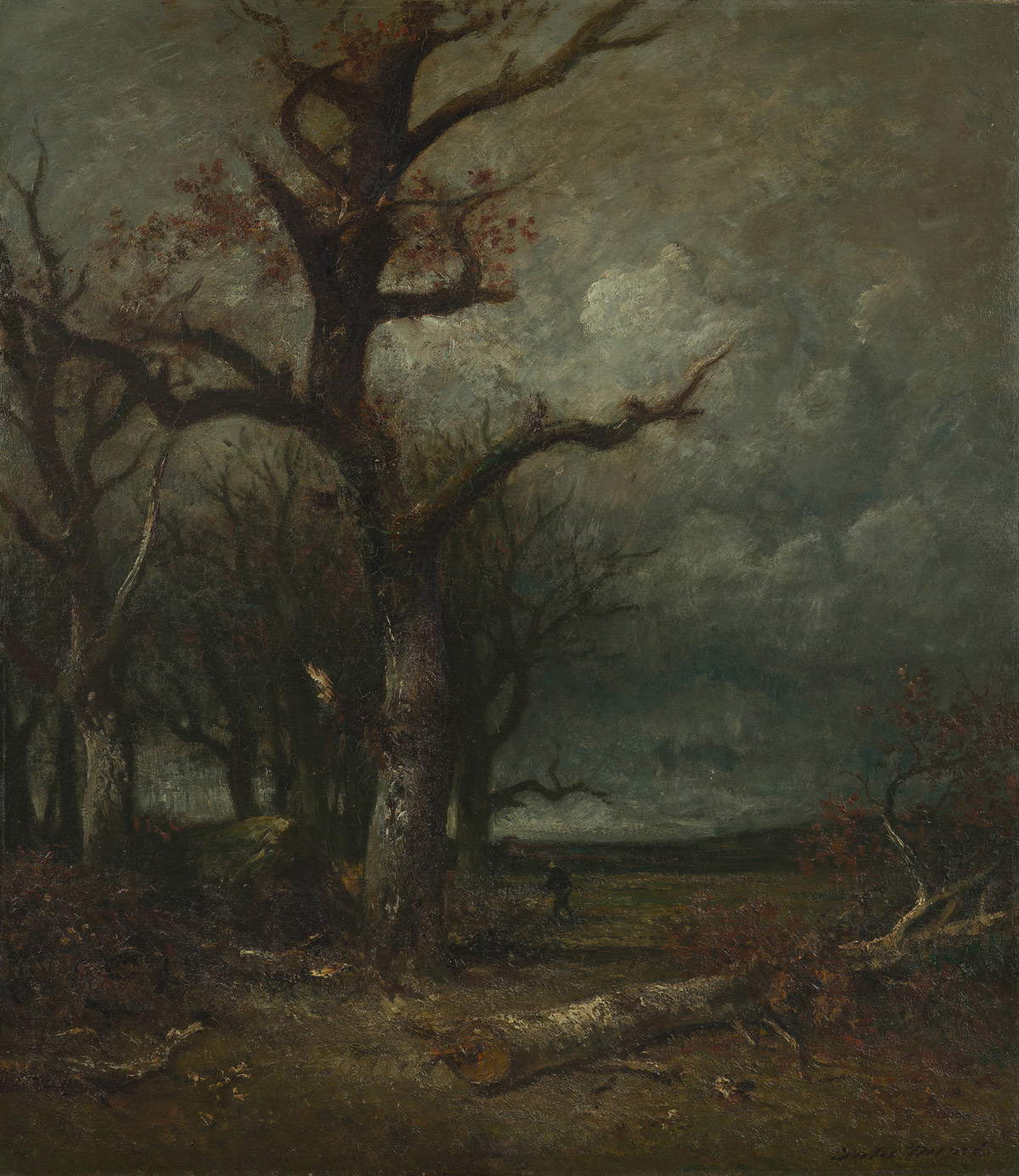 |
| Jules Dupré, Autumn (ca. 1865; oil on canvas, 106.5 x 93.5 cm; The Hague, De Mesdag Collectie) |
 |
| Théodore Rousseau, Forest of Fontainebleau in the Morning (1850; oil on canvas, 142 x 197.5 cm; Paris, Louvre) |
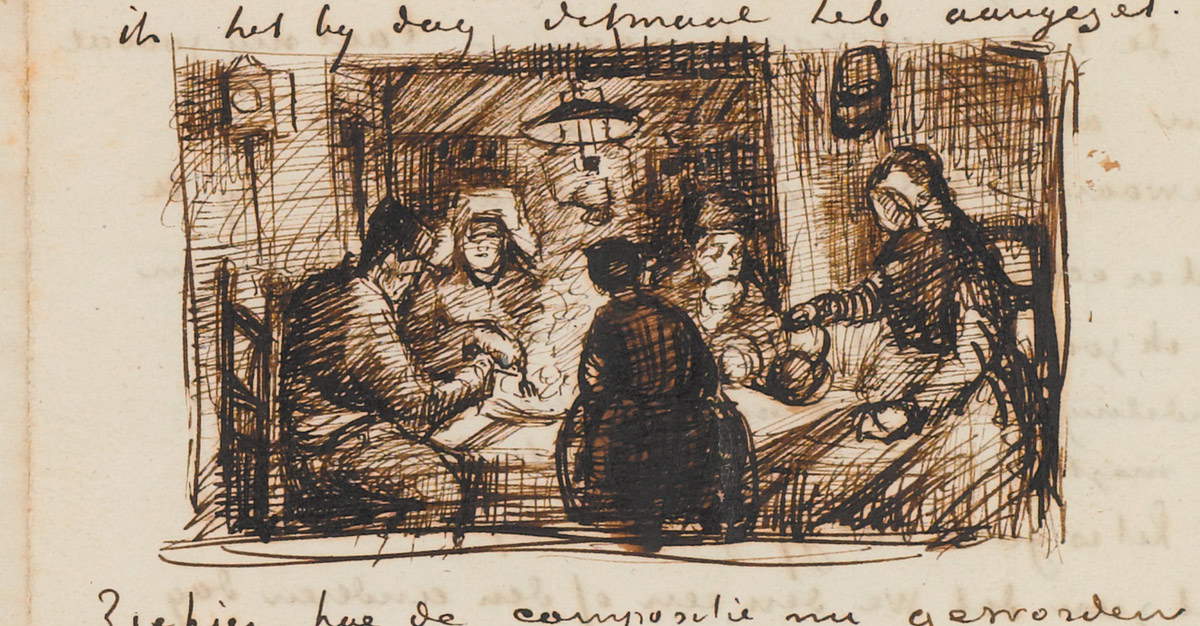 |
| Vincent van Gogh, Sketch for The Potato Eaters, from letter 492 to Theo van Gogh, Nuenen, April 9, 1885 (1885; manuscript on paper; Amsterdam, Van Gogh Museum) |
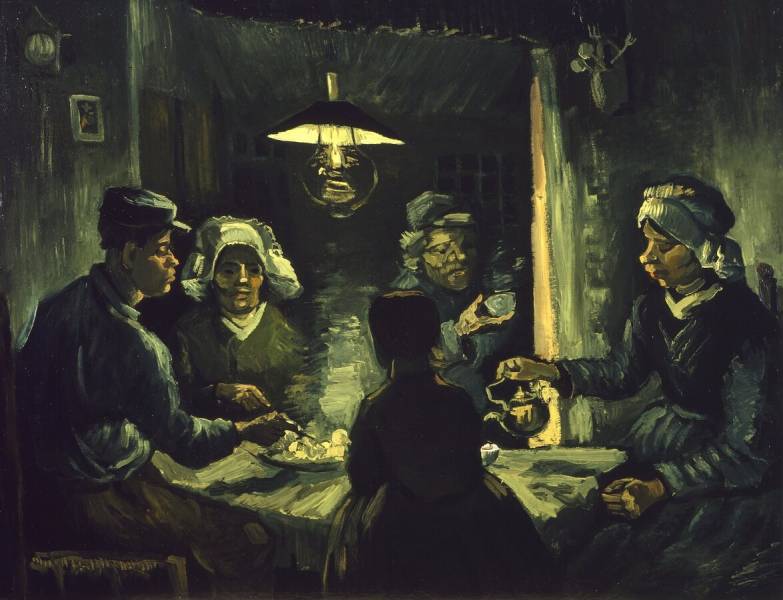 |
| Vincent van Gogh, The Potato Eaters (April-May 1885; oil on canvas mounted on board, 73.9 x 95.2 cm; Otterlo, Kröller-Müller Museum) |
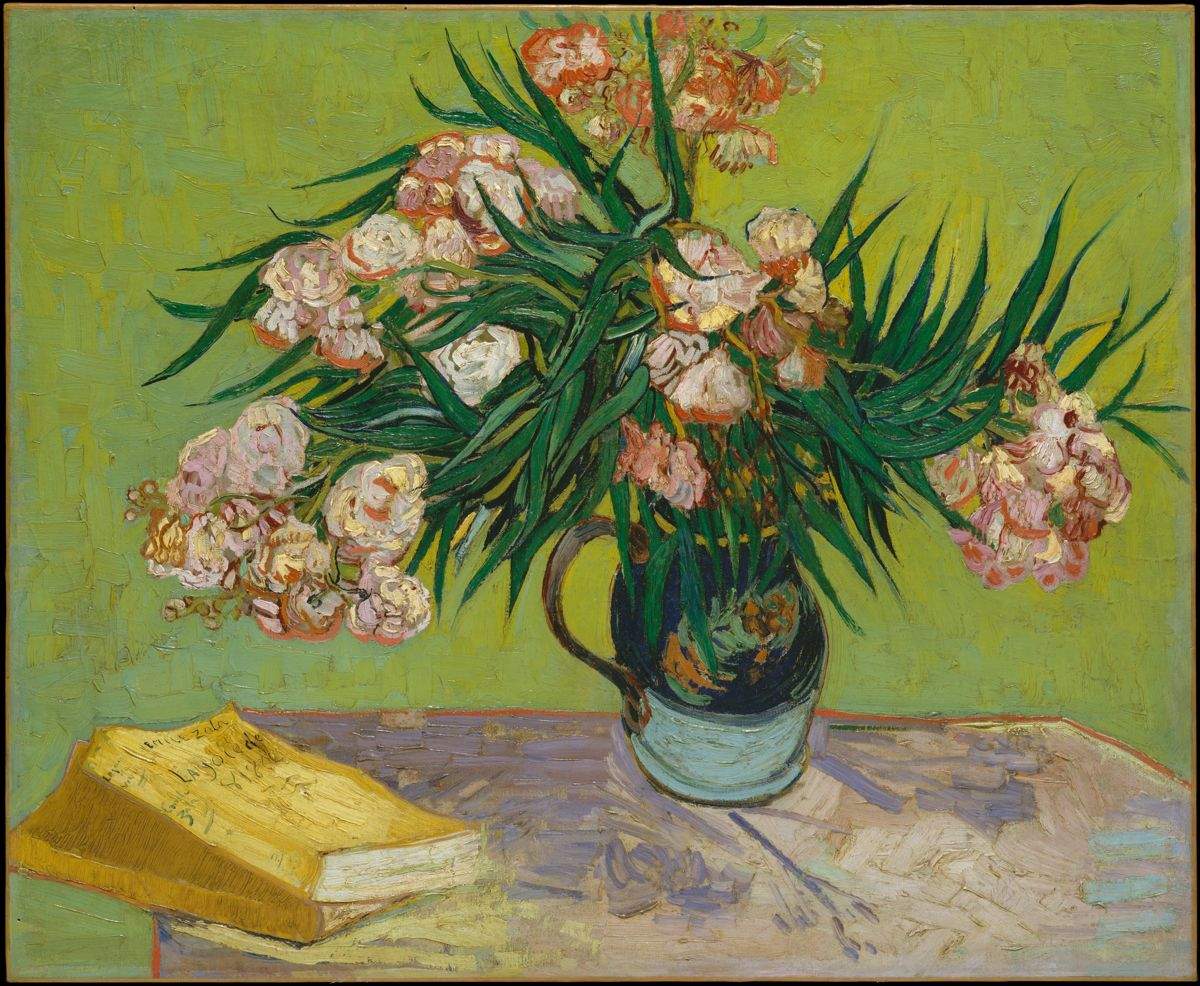 |
| Vincent van Gogh, Oleanders (1888; oil on canvas, 60.3 x 73.7 cm; New York, The Metropolitan Museum of Art) |
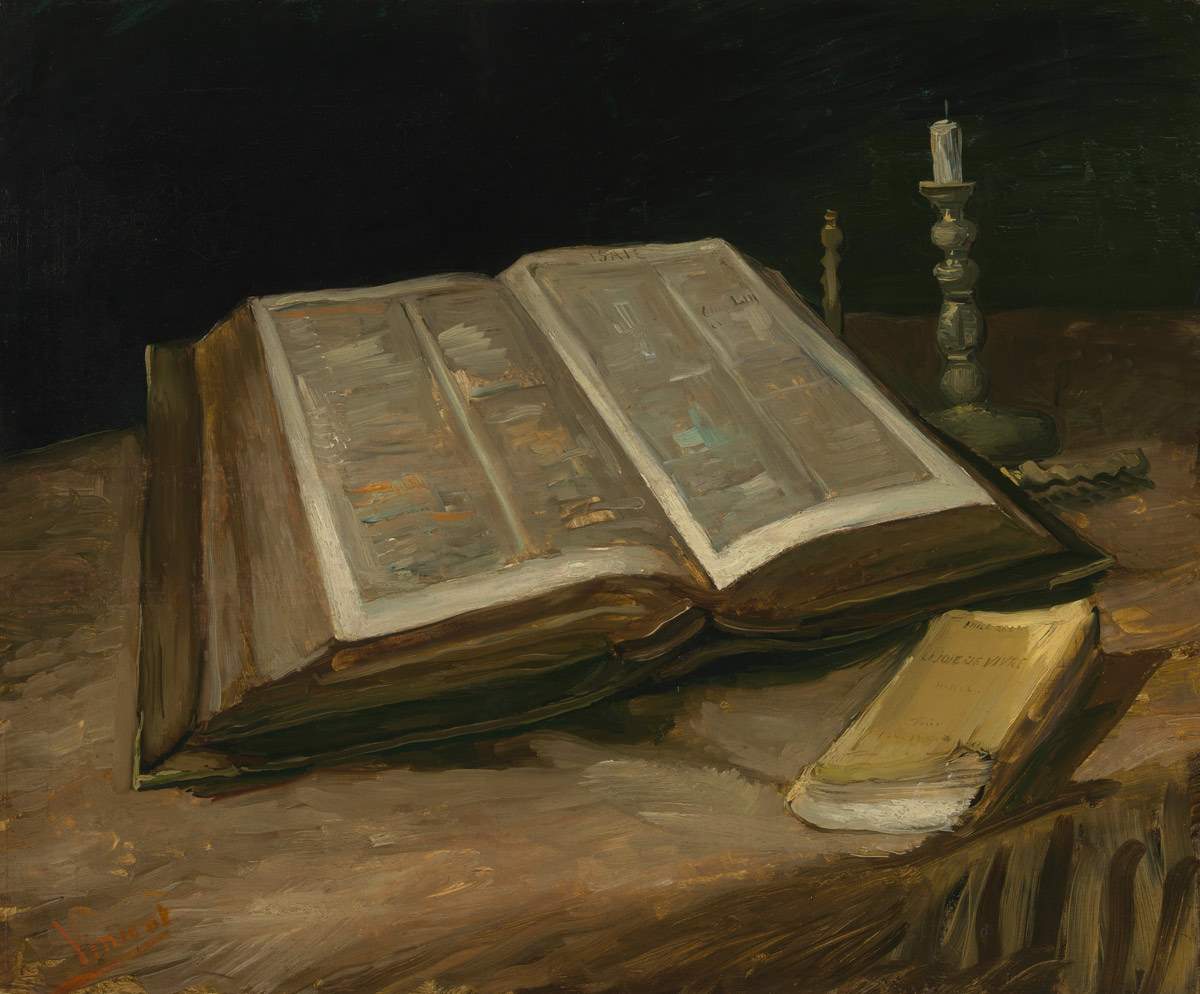 |
| Vincent van Gogh, Still Life with Bible (October 1885; oil on canvas, 65.7 x 78.5 cm; Amsterdam, Van Gogh Museum) |
The relationship between van Gogh and nature has not only been studied from eminently literary perspectives. In the catalog of the exhibition Van Gogh. Man and the Earth, held in Milan’s Palazzo Reale from October 18, 2014 to March 8, 2015, scholar Jenny Reynaerts made an interesting attempt to find the philosophical assumptions of van Gogh’s vision of nature. In particular, Reynaerts identified van Gogh as a kind of heir to the particular sensitivity to nature that was inaugurated in the 18th century by Jean-Jacques Rousseau (Geneva, 1712 - Ermenonville, 1778): in his Rêveries d’un promeneur solitaire of 1777 (“The reveries of a solitary walker,” Rousseau’s last writing, in which the author entrusted ten chapters corresponding to as many walks with his reflections on man, nature, spirit, and life), the Swiss philosopher, writes Reynaerts, “disapproves of the use of nature exclusively for scientific or medicinal purposes,” expresses a condemnation of nature exploited for utilitarian purposes and, conversely, anticipates the theme of empathy between man and the natural world that would shortly thereafter be made his own by Romanticism. “The more sensitive is the soul of the contemplator,” Rousseau wrote in the Rêveries, “the more he indulges in the ecstasy aroused in him by such harmony [of nature]. A sweet and profound reverie then takes possession of his senses, and he loses himself, in a state of delightful intoxication, in the immensity of this beautiful order, with which he empathizes. All individual objects escape him, and he sees and feels nothing but the whole.”
In France, first to pick up this vision would be the painters of the Barbizon school, whom van Gogh loved deeply: among them was that Théodore Rousseau mentioned above, and in his frequent expressions of admiration for the works of Théodore Rousseau one might catch echoes of Jean-Jacques Rousseau’s pre-romantic sentiment: “how good it feels to look at a beautiful painting by Théodore Rousseau that has been laboriously executed to be faithful and decent,” Vincent wrote in a letter to Theo sent from The Hague between December 4 and 9, 1882. “How good it makes one feel to think of artists like van Goyen, Old Crome and Michel. How beautiful an Isaac Ostade or a van Ruysdael. [...] How much spirit and love there is in them, and with what freedom and joy they were made. But the ideal is not to copy nature at all, but to know nature so that what one does looks fresh and authentic-this is what many lack. [...] You will say that everyone has surely seen landscapes and figures since childhood. Question: but did everyone have these thoughts as a child? Question: did everyone who saw moors, meadows, fields and woods also love them, loved the snow, the rain, the storm? Not everyone did it the way you and I did: and it takes a special predisposition and special circumstances, as well as a certain kind of temperament and character to make this love take root.” When van Gogh entrusted these words to his pen, his very short artistic career (which lasted barely a decade) had only just begun: as is well known, Vincent resolved to devote himself entirely to art in 1880, and only since late 1881 had he begun his research with oil painting. At the time, the painter resided in The Hague, and for inspiration he would go to the countryside and woods around the city, where he would find useful subjects for his paintings. It would be from one of these walks that one of his first interesting masterpieces would be born, Girl in the Woods, painted in August 1882, when the woods around the Dutch capital had already taken on autumnal colors, as van Gogh himself reported in a letter that month: an eventuality that ensured that he could tackle a theme in Dutch painting that he had little explored, that of woods in autumn. Van Gogh’s vitality is all concentrated in the attempt to make “the scent of the forest” be perceived and to make it seem as if he were walking through the forest, as he himself wrote: it was, however, a challenge that excited him greatly. Meanwhile, because the autumn forest allowed him to measure himself against the technical difficulties of oil painting: the rendering of light and shadow effects, the setting of perspective, and of course the translation of perceived data into shapes and colors. Van Gogh himself admitted that the main difficulty he faced in making Girl in the Woods was the rendering of the space between the large tree trunks, all placed at different distances and depths. Most importantly, the theme of autumn allowed him to express his sentimental view of nature. A sentimentality that, in this painting, is also cloaked in symbolic meanings: as nature is heading towards its decline, the girl in the middle of the woods, with her graceful figure, her white dress (a symbol of innocence and purity) and her refined gait, adds an intense touch of life to the landscape.
The genre of “undergrowth”(sous-bois in French) was a favorite of the artists of the Barbizon School and is also interesting for following the changes in van Gogh’s art. Although his career lasted only ten years, the changes his painting underwent were profound: the van Gogh of 1882 was still deeply attracted to the Barbizon painters, so much so that in July of that year he went to visit an exhibition displaying their work at the Academy of Fine Arts in The Hague, and in letters he did not fail to communicate his enthusiasm to Theo. The situation changed radically in 1887, during his stay in Paris (during which van Gogh did not miss his customary walks through fields and woods: the fact that he lived in a large capital city was certainly not a disincentive): the Undergrowth painted in July 1887 is clearly affected by his interest in the research of the pointillists whom the Dutch painter had met in Paris. And we sense a further jolt if we compare Girl in the Woods with a painting similar in theme and setting, the Undergrowth with Two Figures, one of van Gogh’s later achievements, dating from 1890: the problems of the work of eight years earlier are no longer relevant. Here, the purple trunks of the poplars, standing out vertically like long columns, the acid and unnatural colors used for the vegetation, the elongated silhouettes of the figures, all respond to the intention that van Gogh illustrated in a letter to his brother dated August 18, 1888: “instead of rendering exactly what I have before my eyes, I use color in a more arbitrary manner so as to express myself strongly.” This is a transposition of the artist’s state of mind at the time the painting was made, some 20 days before his death: the artist was distressed and nervous, and feared for his health. Something similar had also happened during the artist’s hospitalization at the Saint-Paul de Masole psychiatric institute: the sous-bois paintings produced there, such as the Tree Trunks with Ivy now at the Kröller-Müller Museum in Otterlo, are made with a strongly close-up, almost claustrophobic view, evidently a sign of the painful narrowness the artist felt at the time.
 |
| Vincent van Gogh, Girl in the Woods (August 1882; oil on canvas mounted on panel, 59 x 39 cm; Otterlo, Kröller-Müller Museum) |
 |
| Vincent van Gogh, Undergrowth (July 1887; oil on canvas, 46 x 38 cm; Amsterdam, Van Gogh Museum) |
 |
| Vincent van Gogh, Undergrowth with Two Figures (June 1890; oil on canvas, 50 x 100.5 cm; Cincinnati, Cincinnati Art Museum) |
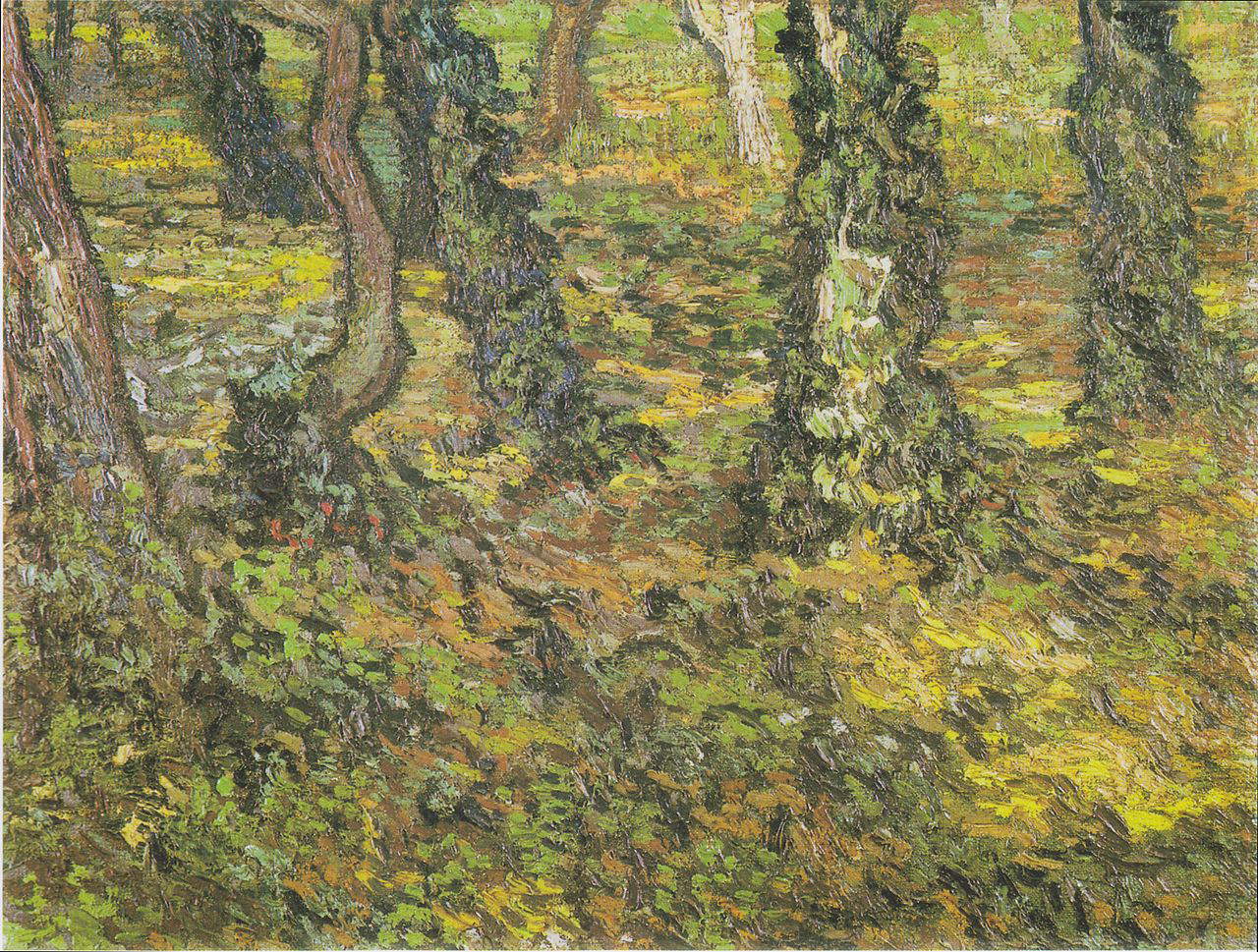 |
| Vincent van Gogh, Logs with Ivy (summer 1889; oil on canvas, 45 x 60 cm; Otterlo, Kröller-Müller Museum) |
What remained unchanged over the years was his solid connection to his environment. As he implied in the letter written between December 4 and 9, 1882, van Gogh had a temperament that led him to have a boundless love for nature. He had been born and raised in Zundert, now a small town of twenty thousand inhabitants but, at the time, little more than a rural village nestled in the countryside of North Brabant.The landscapes of his homeland fascinated him from an early age, his parents Theodorus and Anna taking him with them and his siblings on long walks in the fields (a habit, that of walking in the midst of nature, that Vincent would maintain throughout his life: there is no study, novel or film that does not mention his great passion for walking, fueled also by a formidable resistance to fatigue that could lead him to walk for hours on end), and the young artist never ceased to linger over even the seemingly most insignificant details of what he saw. His passion for nature thus stemmed from a personal inclination and the favorable contingency of having grown up in an environment that could indulge his interests. But, as mentioned above, it would be beyond reductive to exclude the influence that his readings exerted on van Gogh.
Van Gogh’s bookshelf included, in addition to the aforementioned La joie de vivre by Zola, volumes such as Jules Michelet’s L’oiseau (“The Bird”), an essay devoted to the world of birds addressed, however, not with the eye of the ornithologist but with that of the writer, and again Alphonse Karr’s Voyage autour de mon jardin (“Journey to My Garden”), a novel written in the form of letters sent to a traveling friend (the author intended to mock his friend by writing to him that he would find more interesting things in his garden than those he would encounter around the world), and it was a book that van Gogh loved so much that he thought of sending a letter of admiration to Karr, but it was never sent. Other literary works that may have influenced the painter’s relationship with nature include another novel by Zola, La terre (“The Land”), a dramatic and violent story of a peasant family. Probably van Gogh never read the works of Jean-Jacques Rousseau (there is no evidence to prove this), but it is interesting to note that he was quite interested in an author who, in regard to nature, had a position similar to Rousseau’s: the Scotsman Thomas Carlyle (Ecclefechan, 1795 - London, 1881), whose books van Gogh read such as Sartor Resartus or On heroes. In his essay The Dutch roots of Vincent van Gogh, art historian George S. Keyes noted how Carlyle’s conception of nature touched a chord in van Gogh’s soul: “For Carlyle,” Keyes wrote, “nature is a duality: an outer realm of appearance versus an underlying world of truth that reflects the workings of divinity. Every tangible aspect of nature has the capacity to convey a deeper truth to those who are able to perceive it. And those who were able to see the deeper truths of nature (and artists are potentially endowed with this ability) were Carlyle’s heroes.”
In conclusion, returning to Jenny Reynaerts’ contribution, it is worth noting how, according to the curator of the Rijksmuseum in Amsterdam, the interest in Carlyle might help us to situate van Gogh in the debate over Darwin’s theories: a debate in which the painter took no part (nor is Darwin ever mentioned in his letters), but since The Evolution of Species was published in 1871, and since it was a book vehemently and continuously debated not only among scientists, but also in the religious circles of the time (and van Gogh, as is well known, undertook theological studies), it is difficult for Reynaerts to think that van Gogh missed the discussion. Van Gogh, whose family belonged to sections of the Dutch Reformed Church, although he never spoke out on the issue, probably had to follow the line of Carlyle who, Reynaerts writes, “was a staunch anti-Darwinist, who saw in the new scientific theories a further sign of the growing utilitarianism of his age.” The artist, in the few times he broached the subject of science in his epistolary, displayed a position similar to that of the Dutch Protestants, confident of technological progress but striving to reconcile scientific achievements with faith, while keeping the two spheres quite distinct. Darwinism, Reynaerts concludes, “was antithetical to van Gogh’s perception of life, his faith and his idea of nature. In an introspective letter of 1880, he describes himself as a man of passions, and creative passion, which is uncontrollable and unpredictable, had not yet found a place in the natural science of his time.”
Reference Bibliography
Warning: the translation into English of the original Italian article was created using automatic tools. We undertake to review all articles, but we do not guarantee the total absence of inaccuracies in the translation due to the program. You can find the original by clicking on the ITA button. If you find any mistake,please contact us.